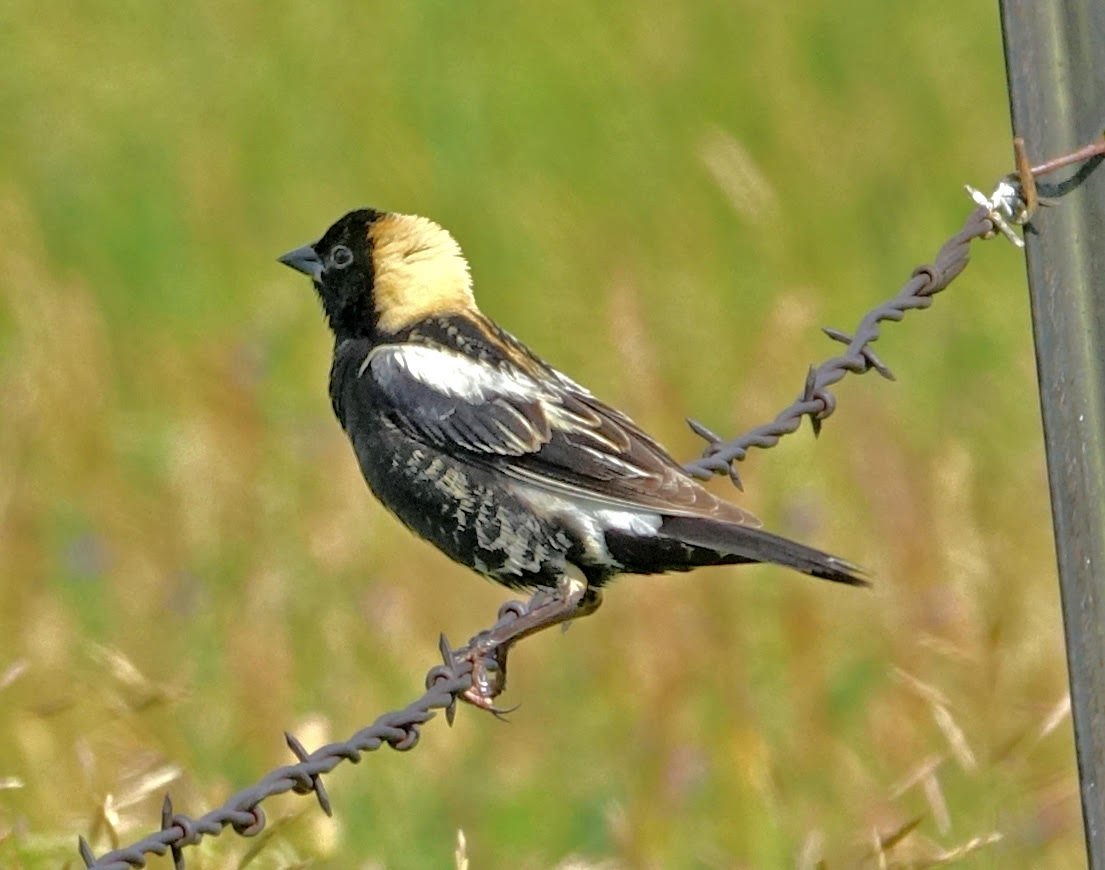July Nature Almanac: Meadowtation
By Ruth Carol Cushman, Stephen R. Jones, and Scott Severs
July 2022
Why sacrifice blood to mosquitoes who are out whining and dining in wet meadows in July? Fireflies, snipe, and bobolinks are three good reasons.
If you slather on mosquito repellant and go to the Cherryvale Trailhead or other wet meadows when the evening light turns golden, you may be rewarded by magical moments: flashing fireflies, winnowing snipe, or bubbly singing bobolinks.
Firefly Light, Firefly Bright, Where Will You Shine Tonight?
Many folk scoff at the idea of fireflies, also called lightning bugs, in high, dry Colorado. However, these beetles in the Lampyrid family shimmer and shine here for a brief period from late June through July. Male fireflies engage in mating flights, flashing out in code to females waiting in the grass below. If the lady is interested, she flashes a response with different timing. They continue blinking until they find each other and hook up. Every species produces its own unique signal that’s distinctive in color, arc shape, and timing when cruising for a mate. The warmer the evening, the more rapid the signaling. On a macabre note—some female species will mimic the signal of a different species in order to lure in a love-sick male. Then she eats him.
Fireflies utilize light in mate attraction. Photo by Randy Gietzen.
Snipe Hunt, Anyone?
Wilson’s Snipe reside year-round in Boulder County. Photo by Steve Jones.
Snipe are not mythical birds invented to fool the gullible. In reality, they are pudgy, brown and buff birds with a long bill used to probe in mud for worms and other invertebrates. The bill tip is flexible and can open to grasp food even while the base stays closed (see photos of this in Common Snipe). Wilson’s Snipe are year-round residents in Boulder County but tend to skulk in reeds or hunker down along a shoreline during winter. Then, starting in June, the males perform a courtship flight above wet meadows. The winnowing sound, similar to a horse neighing, is the wind whistling through their tail feathers during flight. They can also sound like a flicker when they call while perched on a sturdy fence post.
Bobolinks Return
Bobolinks travel some 12,500 miles from southern South America to also nest in these meadows.
Map of Bobolink abundance across the western hemisphere throughout their migratory cycle. Map from eBird.
These black and white birds with a pale golden cap look as though they are wearing a tuxedo backwards, according to Cornell’s All About Birds website. Like many grassland birds, they also perform dazzling courtship flights while singing a shimmering song. You can often see them perched on a post, but we have also watched them alight on an asparagus frond without breaking it.
Male Bobolink displaying in a meadow in Boulder County. Photos by Glenn Cushman.
You may need to visit your chosen meadowtation station several times to see all these wonders. Snipe are most active in early morning and at dusk, though we have also seen them at the same time we see bobolinks who are also active during the day. Fireflies are seen for only a few hours after dark.
Other July Events
Above treeline, pikas make hay piles as marmots sunbathe on mountain boulders. White-tailed Ptarmigan chicks hunt for insects, and American Pipits, White-crowned Sparrows, and Horned Larks hatch.
Wildflowers -- such as moss campion, rosy paintbrush, chiming bells, and Parry’s primrose -- carpet the tundra and subalpine meadows. Watch for bumblebees, parnassian butterflies, and common alpines hovering around the blooms.
At lower elevations, watch for dragonflies and damselflies. We have been especially charmed by the ebony jewelwings that we’d never seen until a few years ago. They hawk for insects along sluggish, slow-moving streams. Read more about ebony jewelwings in the August 2021 Nature Almanac).
Broad-tailed and Black-chinned Hummingbirds continue to feast from feeders and flowers and are joined by their pugnacious cousins, the Rufous Hummingbirds, who are on their return migration from the Pacific Coast.
Increasing numbers of bats come out for an evening drink, dipping down for a sip from lakes and ponds.





